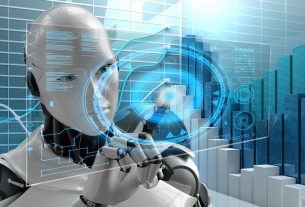Sometimes, I end up performing research without knowing it. Or even wanting to.
more Technically Incorrect
Not your actual scientific kind, you understand. Just the kind that ends up illuminating my world in unexpected ways.
Here I was the other day at Lisbon Airport, Terminal 2, and suddenly hunger attacked.
In the near distance was one of society’s foremost culinary sanctuaries, McDonald’s. So while my wife went to get something healthy, I succumbed to experiencing the joys of a Portuguese Big Mac and, of course, fries.
There were six large screens on which you could order. All were occupied, so I sauntered to the counter where a very nice man quickly punched in my needs. The food arrived quickly, some might say disturbingly quickly.
Also: 5 must-have devices for work travel now
Then I sat down and observed the flow of humans coursing toward their red-and-yellow beacon.
The screens had an advantage. They were placed nearer to the aisle where people were walking. Ergo, many gravitated immediately toward them.
Most tapped with confidence. None, in the hour that I sat there, seemed to have any trouble navigating these vast quasi-iPads.
My utterly unscientific estimate was that for every customer who ordered at the counter there were 30 who chose the screens.
Are the screens necessarily quicker? I really don’t know. At the counter you look up at the menu, speak to a human, and then pay. On the screen, you have to do a little scrolling, a little tapping, a little waiting, and then pay.
It seemed clear, though, that the enormous majority of humans believed the screens would give them swifter satisfaction.
Also: Mushroom meat and robot chefs: Chipotle’s vision for fast food
I hear you grumble that it was only older people who wafted to the counter. It wasn’t. There was absolutely no age bias that I could see.
What was, however, curious was that of those who chose to go to the counter, the overwhelming majority were men. Men who were on their own and men who were in groups.
Perhaps they had special orders that they thought a screen couldn’t handle. Perhaps they didn’t want anyone to see how much they were ordering, or what. It couldn’t be that they found the screens intimidating, surely.
Watching humanity in action, making natural choices — or, rather, choices that felt natural to them — is entirely absorbing.
If you order via a screen, though, the amount of human interaction is limited to someone handing you a tray or a bag and you — perhaps — saying, “Thank you.”
Yet this is fast food, so the most important thing isn’t the human contact. It’s the speed, governed by the need.
Onscreen ordering is, of course, merely one facet of fast food’s future. For example, McDonald’s is rolling out robot ordering at the drive-thru.
Also: Amazon teams up with a fast food robot
Yet the company’s CEO, Chris Kempczinski, continues to insist that McDonald’s doesn’t have a completely robotic future. He recently explained: “The idea of robots and all those things, while it maybe is great for garnering headlines, it’s not practical in the vast majority of restaurants.”
I fear what he means by practical is, in fact, profitable.
As with all research, I was left with questions. What is it about men and counter ordering? Why don’t people see onscreen ordering as innately less hygienic? Won’t the future merely entail mobile ordering instead of these big screens?
I suspect, though, that you’re left with only one question: How was my Big Mac?
Honestly, it fell apart within seconds.


